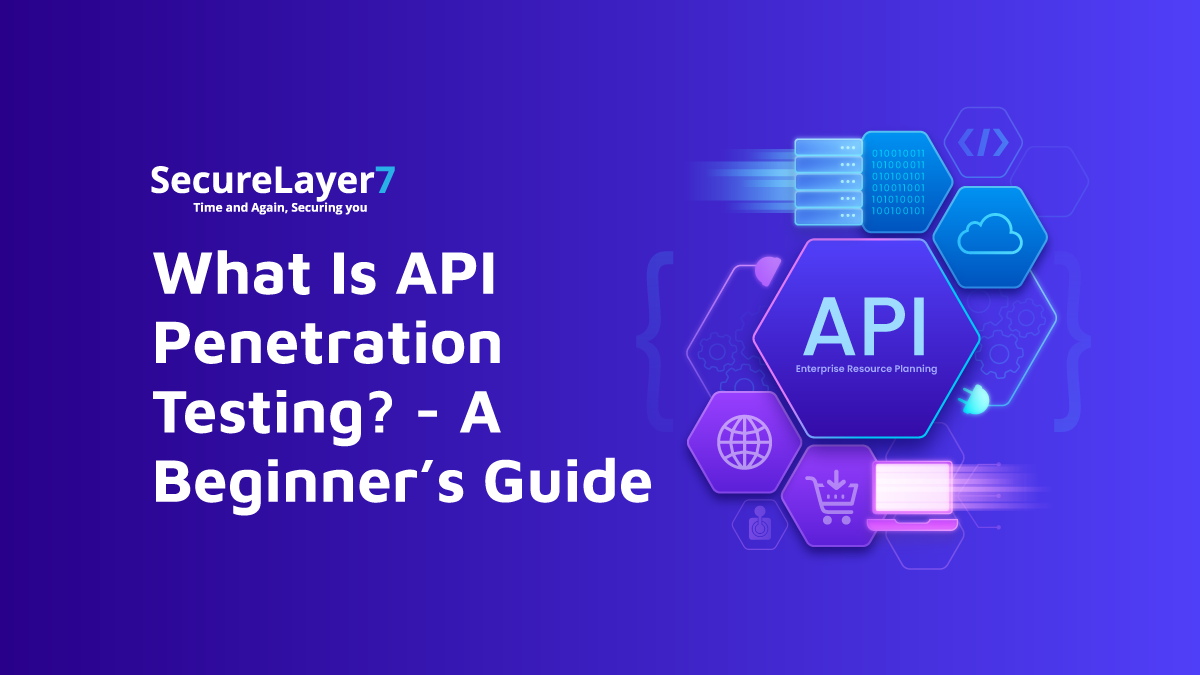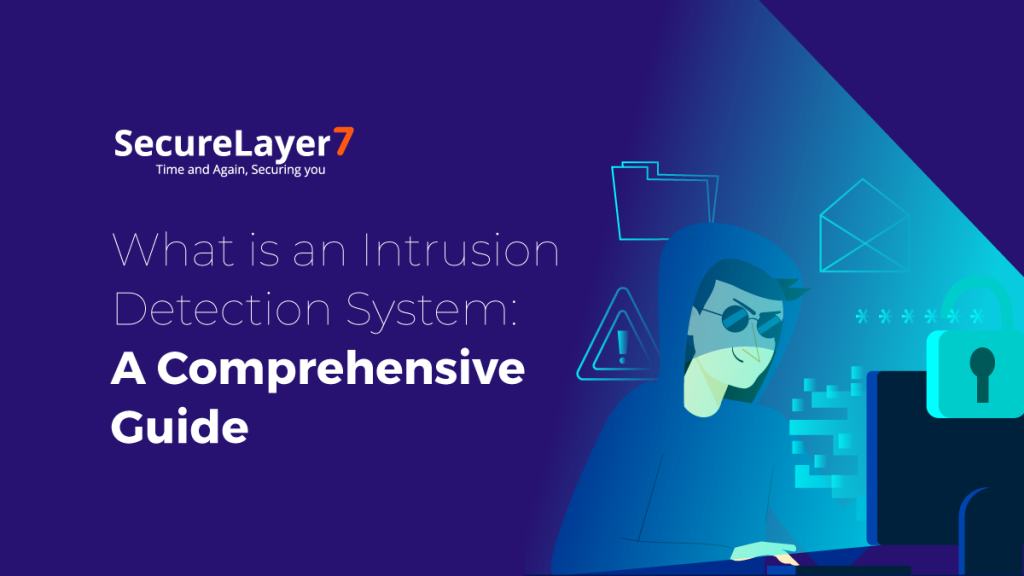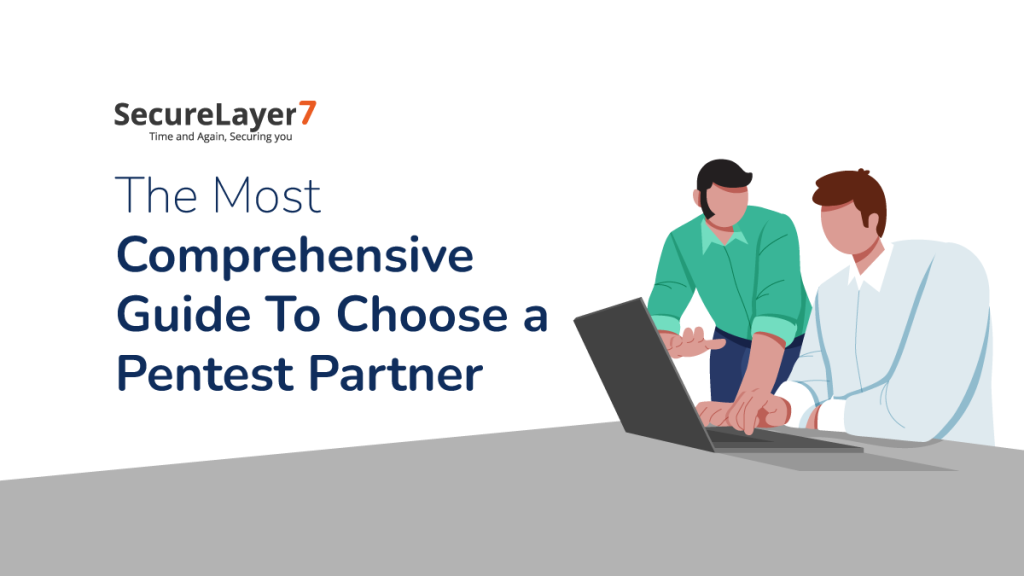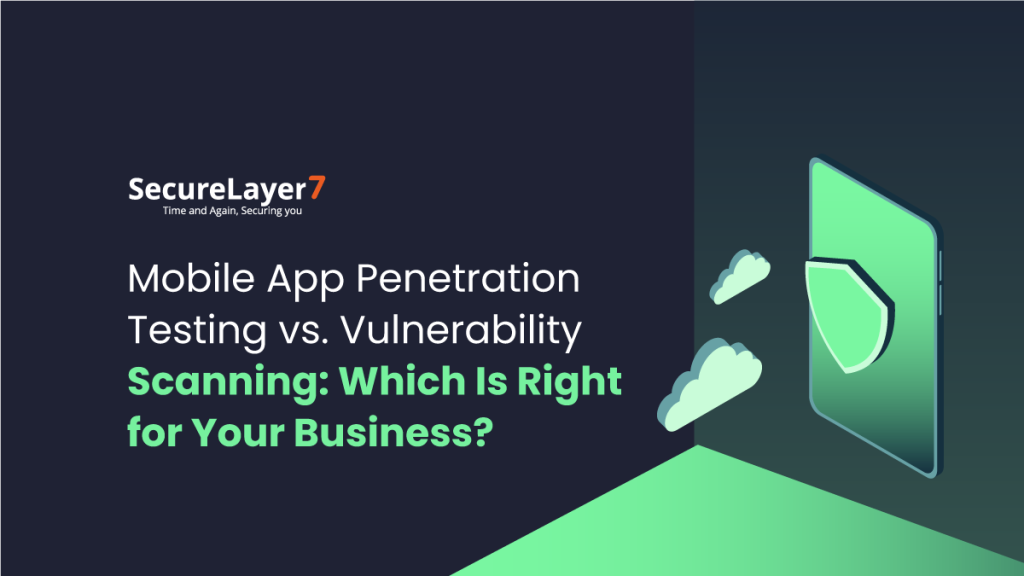
What Is API Penetration Testing? – A Beginner’s Guide
February 17, 2023
A Road from Dependency Confusion to RCE
February 27, 2023
Most modern businesses increasingly favor cloud services for their data management and storage simply because they are accessible, scalable, flexible, and cost-effective solutions. It is also a practical solution for businesses with remote or hybrid work environments that require employees to access company data from multiple locations.
Moreover, cloud services allow you to leverage data to derive actionable insights that dramatically improve your business’s performance.
When cloud security events occur, and bear in mind they often do, the cloud data retrieval is quick, ensuring business continuity and disaster recovery. While these are the undeniable benefits of transitioning to cloud services, take a moment to consider the business implications you may have to undergo when your cloud services get breached.
On the one hand, you may continue to operate unhindered. However, on the other hand, you still would have to suffer from the financial and reputational repercussions of your sensitive data falling into the wrong hands.
Enter Cloud Penetration Testing, a meticulous and effective strategy to secure your cloud services and keep your business’s data optimally protected.
During our exploration into cloud penetration testing, we will cover the following topics:
- Why is Cloud Penetration Testing Important?
- How Does Cloud Penetration Testing Differ from other forms of Penetration Testing?
- What are the Most Common Cloud Vulnerabilities?
- What is the Shared Responsibility Model for CSPs?
- What are the Notable Challenges in Cloud Penetration Testing?
- SecureLayer7’s Cloud Penetration Testing Methodology
- Secure Your Cloud Infrastructure with SecureLayer7’s Pentesting Services
This article will explore Cloud Security Testing, the most common vulnerabilities a Cloud Pentest can uncover, its challenges, and a winning methodology to conduct proactive and comprehensive Cloud Pentests on your cloud services.
What is Cloud Penetration Testing?
Cloud Penetration Testing is a security assessment where a target business performs a self-inflicted attack on its cloud infrastructure to uncover vulnerabilities, risks, security gaps, and misconfigurations in its security posture.
The Cloud Pentester then leverages the information gathered from the simulated exploit to deploy countermeasures, configurations, patches, and updates to dramatically reduce its attack surface, safeguarding itself from a real-world breach.
Why is Cloud Penetration Testing Important?
As one of the leading methods of cloud security assessments, they are vital to an organization’s data security because they allow them to
- Identify internal and external vulnerabilities, misconfigurations, security gaps, and risks.
- Determine how any given vulnerability would be leveraged for exploitation by a real-world attack scenario.
- Perform threat modeling to determine the impact levels of each exposure to devise strategic remediation.
- Provide businesses with the much-needed knowledge and actionable insights on remediation.
- Provide businesses with recommendations on the best practices for closing security gaps and keeping them closed.
Although various Cloud Penetration Testing tools are available for users to devise and launch their own Cloud Pentests, Cloud Service Providers (CSPs) have their own regulatory guidelines and policies on what components are allowed and disallowed to be pen tested.
Instead, it is best to use a professional Cloud Penetration Testing service provider who understands the compliance implications and stays within the bounds outlined by the third-party cloud service.
How Does Cloud Penetration Testing differ from other forms of penetration testing?
While the goal behind a penetration test may be to uncover vulnerabilities, exploit the target system and apply remediation, they are not all the same. Each type of penetration test is developed and designed by numerous cybersecurity professionals to particularly address individual aspects of a business’s systems and networks.
For instance, while a web application penetration test may test and uncover issues within a business’s web applications and microservices, a mobile application penetration test will focus specifically on vulnerabilities within iOS and Android-based mobile applications.
Likewise, industry professionals specifically designed Cloud Penetration Testing to identify, address, and resolve the intricate threats facing an organization’s cloud infrastructure and third-party vendors. Cloud Penetration Testing specializes in uncovering vulnerabilities within the cloud environment’s configurations, user credentials, encryptions, applications, access controls, databases, and APIs.
Also Read: Our coverage on Standard Penetration Testing, Website Penetration Testing, Web Application Penetration Testing, and Mobile App Penetration Testing.
What are the most Common Cloud Vulnerabilities?
Amongst the numerous attack vectors that could potentially lead to varying degrees of devastating breaches of your cloud systems, here are some of the most common vulnerabilities.
Insecure APIs
APIs are well-documented interfaces that CSPs deliver to their customers as an easy way to access their services. When these interfaces are not secured properly, they pose a severe risk of malware attacks.
For this reason, insecure APIs are one of the most frequently exploited vulnerabilities where cybercriminals target and infect unsuspecting cloud servers with malware purported to steal or outrightly delete an organization’s cloud storage data.
Server Misconfigurations
Your cloud security settings must always be configured correctly to reduce your risk of a data breach. The problem is that most businesses do not have the necessary technical knowledge to correctly configure the cloud security controls provided to them by their CSP. It is why misconfigurations are on the list as one of the most commonly occurring sources of exploitation.
Although CSPs design their services to be user-friendly solutions that facilitate accessible data sharing between organizational stakeholders, a single successful exploit stemming from a misconfiguration can devastate a business’s data privacy and cause invaluable damage.
So remember, even the best cloud security strategy can crumble with a single misconfigured security control.
Weak Credentials
Most attacks originate from internal sources, where attackers gain access to an employee’s credentials through negligence or substandard password security practices. Password security has always been a significant problem for most organizations as it introduces the element of human error.
An attacker can compromise the cloud service and access sensitive data by gaining access to an employee’s sensitive credentials. It is for acquiring such access that drives attackers to perform social engineering and phishing attacks to compromise private accounts and gain access to your cloud infrastructure.
Outdated Software
Software developers constantly devise updates and patches to fix apparent critical security vulnerabilities in your cloud services.
Unfortunately, most of the time, the vulnerabilities the patches intend to address are already public knowledge among cybercriminals, as attackers can easily employ automated scanners to detect and exploit such vulnerabilities.
By failing to update your software, you unwittingly expose yourself to the very exploits the update would have prevented.
Insecure Coding Practices
Subpar coding practices have always been and continue to be a major problem facing most Cloud infrastructures, where a single line of faulty code could open you up to an array of potential risks and vulnerabilities.
SQL injections, Cross-Site Request Forgery (CSRF), and Cross-Site Scripting(XSS) are all notable vulnerabilities that allow attackers to compromise a cloud infrastructure through insecure coding practices.
What is the Shared Responsibility Model for Cloud Service Providers?
The Shared Responsibility Model is a compliance and security framework for CSPs and their customers. It outlines the responsibilities of both parties to optimally secure all aspects of their cloud infrastructure, including its architecture, hardware, software, operating systems, endpoints, configurations, settings, access rights, and network controls.
| Type of Service | CSPs Responsibility | Customer’s Responsibility |
| Platform-as-a-Service (PaaS) | Platform security, including software & hardware | Applications security of those developed on the platform. Endpoints, workloads, user security, and network security. |
| Infrastructure-as-a-Service (IaaS) | Infrastructure component security | Application security of those installed on the developer’s infrastructure, such as Operating Systems, applications, and middleware. Endpoints, workloads, user security, network security, and data. |
| Software-as-a-Service (SaaS) | Application Security | Endpoints, user security, and network security. Misconfigurations, workloads, and data. |
In other words, Both parties will enter a Service Level Agreement (SLA) such that the CSPs will remain responsible for monitoring, tracking, and addressing security threats within the cloud and its underlying infrastructure. At the same time, the responsibility of securing the data stored within the cloud environment falls with the customers.
What are the Challenges in Cloud Penetrating Testing?
Let us dive into some of the challenges in Cloud Penetration Testing:
Lack of Transparency
Sometimes, businesses may engage in cheaper service providers instead of well-reputed CSPs such as Azure, Amazon Web Services, and Google Cloud Platform. Substandard providers often outsource their data management and storage to third-party centers.
Here lies the transparency issue in the cloud service industry, where the business does not know where their data is stored nor the security measures implemented by the third party to protect it. The situation worsens because you cannot perform your own internal security audits on the service provider to check if your data is handled safely.
Resource Sharing
One of the main challenges of cloud security testing is resource sharing. When you engage in a cloud environment, your resources are often shared amongst multiple users making it a challenge to isolate and test specific resources. This could increase false positives and false negatives, which can adversely affect testing accuracy.
Additionally, resource sharing can make it hard to obtain the required permissions to conduct thorough testing. Overcoming these challenges is critical to minimize the risk of a security event and increase the effectiveness of your Cloud Penetration Tests.
Policy Restrictions
Supposing you are conducting a Cloud Penetration Test on your cloud infrastructure, you should know that CSPs have varying policies that may restrict the scope of your test. Such policies may require prior notice before conducting a test.
Additionally, your CSPs policies may place mandatory testing criteria, requiring you to perform only a few permissible types of Cloud security tests and only on prespecified endpoints. Such restrictions are a significant challenge and hindrance to conducting Cloud Penetration Tests.
To understand better, let us look at the rules of engagement of the three top CSPs in the market today:
AWS
While AWS Cloud Penetration Testing Policy does allow a range of permissible testing without giving them notice, such as network stress testing, it prohibits attacks involving:
- Distributed Denial of Service (DDoS), Denial of Service (DoS), Simulated DoS, and Simulated DDoS are strictly subject to Amazon’s DDoS Simulation Testing policy.
- DNS Zone Walking
- DNS Hijacking
- DNS Pharming
- Protocol Flooding
- Port Flooding
- Request Flooding (Login request flooding, API request flooding)
If you wish to perform one or more of these tests, you can only do so with prior approval from AWS. If your request is granted, you will still require to perform the tests by working directly with the AWS support team.
Those wishing to perform Red, Purple, or Blue team testing must submit a simulated events form to AWS for approval before proceeding.
Azure
Microsoft’s Azure cloud service only allows eight products, including Azure Active Directory, Azure DevOps, Microsoft Account, Microsoft Azure, Microsoft Intune, Microsoft Power Platform, Microsoft Dynamics 365, and Office 365. Anything beyond these products falls out of the scope of their permissible tests.
Moreover, their rules of engagement policy Cloud Penetration Testing prohibits
- Scans or tests targeting assets belonging to other Microsoft Cloud customers.
- Accessing data that does not belong to you.
- Denial of Service testing.
- Phishing or other social engineering attacks against Microsoft employees.
- Network-intensive fuzzing of any form, with the exception of targeting your own Azure Virtual Machine
- Automated testing of services that increases traffic.
- Accessing any other customer’s data.
- Non-compliant usage of Microsoft services per their Acceptable Use Policy.
GCP
Google may not require customers using their cloud platform to provide prior notice to conduct penetration tests. However, they need them to abide by their Acceptable Use Policy and Terms of Service.
Google even offers a reward program for those that spot high-risk vulnerabilities and promptly report them to the company. When performing tests on GCP, their policy dictates that you prohibit the following.
- Violation of the legal rights of others.
- Phishing attacks against other users.
- Distribution of Trojan horses, viruses, worms, corrupted files, or other destructive items.
- To gain unauthorized access or disruption of the services or equipment used by Google’s services by customers, authorized resellers, or other authorized users.
- Disruption of software, services, and equipment used by Google to provide its services.
- Usage of Spamming on other users.
- Usage of Google Services and their interfaces to access other Google products or services in violation of the company’s Terms of Service.
SecureLayer7’s Cloud Penetration Testing Methodology
Having a well-defined methodology is vital to ensure that Cloud Penetration Testing is performed exhaustively and safely. That’s where SecureLayer7’s robust Cloud Penetration Testing methodology excels over others.
Step 1: Scoping the Cloud Service Provider’s Policies and Infra
The first step in SecureLayer7’s cloud penetration testing methodology is scoping. This involves identifying the cloud service provider’s policies and infrastructure to understand the cloud architecture, the types of services provided, and the security measures in place. This step is essential because it helps the testing team identify potential vulnerabilities attackers could exploit.
Step 2: Mapping and Service Identification
The next step is mapping and service identification, which involves mapping the cloud infrastructure and uncovering the services that are currently in use. The aim is to comprehensively understand the cloud environment to determine potential attack surfaces and vectors.
Step 3: Recon and Enumeration
The third step is reconnaissance and enumeration, where the tester gathers information on the cloud infrastructure and services. The reconnaissance phase aims to identify potential vulnerabilities and attack vectors. It is critical in determining security flaws in the cloud infrastructure and its services.
Step 4: Vulnerability Analysis
The next step is vulnerability analysis using manual and automated testing tools and techniques to identify cloud infrastructure and service vulnerabilities. The aim is to perform threat modeling to identify and prioritize vulnerabilities based on their impact and severity.
Vulnerability analysis is essential in Cloud Penetration Testing because it helps the testing team identify pressing vulnerabilities that could pose an immediate danger to the cloud infrastructure if allowed to be exploited.
Step 5: Vulnerability Identification
The next step is identifying the vulnerabilities discovered during the vulnerability analysis phase, their root cause, and any other insights that could be valuable for the planned exploit. Once completed, the cloud pentester should have all the threat information needed to conduct a successful exploit. After which, develop and implement the strategic exploitation plan.
Step 6: Post-Exploitation
The next step involves cloud pentesting the security controls’ effectiveness by attempting to actively launch exploits on the vulnerabilities identified in the previous stages.
Here you pinpoint the weaknesses in the cloud infrastructure and services that could be a practical gateway for attackers and recommendations for mitigation.
This information is documented and presented to the business through a comprehensive business-oriented report detailing all the findings and supporting evidence.
Step 7: Strategic Mitigation
The next step is strategic mitigation, where the tester develops a strategic plan to address the vulnerabilities identified during the cloud penetration testing.
In this stage, the vulnerability mitigation plan will address problems based on their priority levels and propensity to harm the cloud infrastructure. The aim is to decrease the risk of a security incident and to improve the security posture of the cloud infrastructure.
Step 8: Patch Verification
The final step is patch verification, where the tester verifies if the patches implemented properly address the vulnerabilities practically and effectively. The aim is to ensure that the cloud infrastructure and services are optimally secured with minimal risk of an attack.
If, after the patch verification, problems persist, further tests will be conducted to ensure that all threats to the cloud infrastructure are successfully quashed.
In conclusion, SecureLayer7’s cloud penetration testing methodology is a comprehensive approach to pinpointing and mitigating cloud security risks in the infrastructure and services. By following this methodology, organizations can guarantee that their cloud environment is secure and that the risk of a security incident is significantly reduced.
Secure Your Cloud Infrastructure with SecureLayer7’s Pentesting Services
SecureLayer7’s Cloud Application Penetration Testing is designed to comprehensively protect cloud infrastructure by spotting and mitigating high-risk vulnerabilities by testing your applications hosted on the cloud, internal applications hosted on the cloud, and the cloud console. Our compliance checklists guarantee that your Cloud infrastructure remains compliant and optimally protected against exploits and severe data breaches.
We are renowned amongst SMEs that leverage our Cloud Application Penetration Testing services to perform and act on continuous penetration testing. We specialize in helping businesses maintain cloud infrastructure security by detecting and quarantining vulnerabilities in Azure, AWS, and Kubernetes cloud systems at a fairly reasonable price.
Our network security service ensures that your corporate infrastructure follows the best network security practices, and complies with industry regulations to reduce the risk of attacks on your devices and servers.
SL7 provides full security service to your cloud services with automated and manual testing to identify and remediate all risks challenging your cloud infrastructure. Contact us to find out how we identify and mitigate all your cloud-based vulnerabilities.


